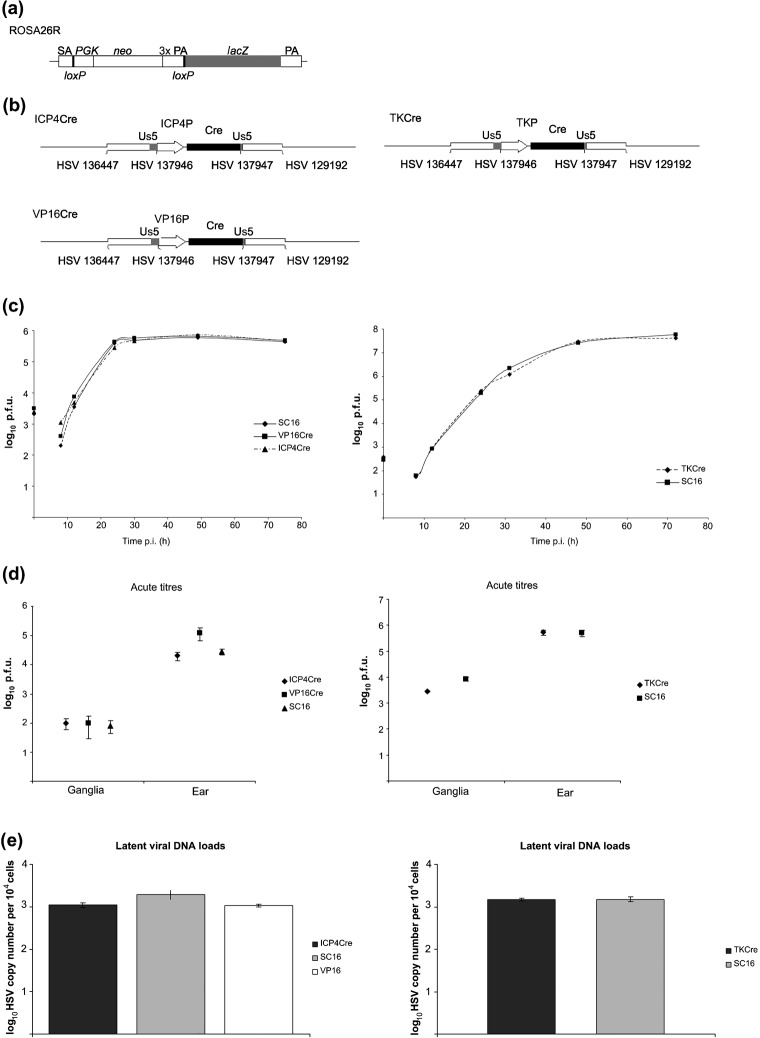Fig. 1.
(a) Structure of the ROSA26 locus in R26R reporter mice. The transgene contains a splice acceptor sequence (SA) upstream of a neomycin phosphotransferase gene (neo) flanked by loxP sites and downstream of a lacZ gene. Following Cre recombination, the neo gene is removed and the lacZ gene is constitutively expressed by the ROSA26 promoter (Soriano, 1999). (b) Genomic structures of Cre-expressing viruses: HSVICP4Cre, HSVTKCre and HSVVP16Cre have a Cre expression cassette inserted in the non-essential Us5 region. This cassette contains the promoter of interest upstream of Cre-recombinase. The Cre gene is fused to a nuclear localization signal and contains an intron 578 bp downstream of the transcription start site. (c) In vitro growth curves of recombinants and WT strain SC16 are from a single experiment performed in BHK cells. (d) In vivo pathogenicity studies. Virus titres in ears and pooled CII, CIII and CIV ganglia of BALB/c (HSVTKCre) or C57B6 (HSVICP4Cre/VP16Cre) mice sampled at day 5 p.i. Data points represent mean viral titres from five mice±sem for each recombinant and WT strain SC16. Each panel represents an independent experiment. (e) Latent DNA loads of recombinant viruses. Real-time PCR was performed on DNA extracted from latently infected ganglia (CII, CIII and CIV pooled from five mice) using as targets ICP0 and APRT. Values represent the mean±sem of the numbers of the HSV genome copies per 104 copies of APRT from triplicate PCRs.

